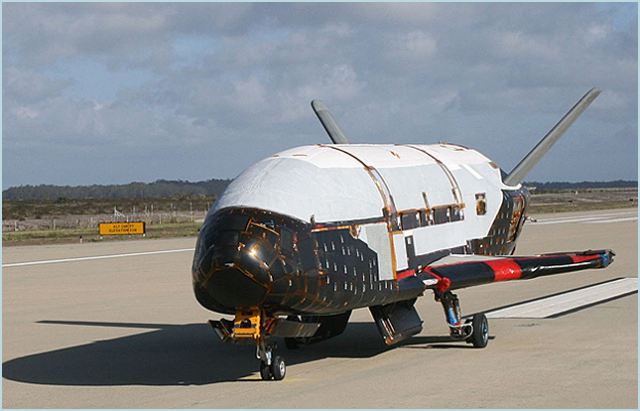| a | |||
| |
|||
World
Air Force News - United States |
|||
United
States Air Force confirms a third mission for the X-37B robotic space
plane. |
|||
The US Air Force confirms that they will once again launch its mysterious
X-37B spy plane back into the sky, but what it will do there remains a
mystery. For the third time ever, the Boeing-made unmanned aircraft will
be put into orbit. |
|||
 The Air Force's unmanned, reusable space plane landed in the early morning of June 16 at Vandenberg Air Force Base, Calif., a successful conclusion to a record-setting test-flight mission that began March 5 from Cape Canaveral Air Force Station, Fla. (U.S. Air Force file photo) |
|||
Details on the operation, as usual, remain scarce, as the Air Force remains insistent on keeping information about the aircraft under wraps. On the record, however, the agency has confirmed that the X-37B will be blasted into space next month from Cape Canaveral, Florida with the assistance of an Atlas 5 rocket. The mission this October will mark the third instance the Air Force has tested its space-age aircraft, with its second endeavor wrapping up only earlier this year in June. The Air Force has not confirmed how long the X-37B will be in orbit during its next mission, but its last voyage lasted 469 days, more than twice the length of its first test. For next month’s mission, the Air Force will once more use the plane that was launched into the sky during their first test run of the craft. A second craft was used for the mission that ended earlier this year. The Air Force launched
the initial X-37B under the mission name OTV-1 in April 2010 but has
refrained from disclosing almost any information at all from the general
public. The secrecy has in turn created concern from citizens of the
United States and abroad who fear it might be engaging in surveillance
missions. Technologies being tested in the program include advanced guidance, navigation and control, thermal protection systems, avionics, high temperature structures and seals, conformal reusable insulation, lightweight electromechanical flight systems, and autonomous orbital flight, reentry and landing. |
|||
United States Air Force confirms a third mission for the X-37B robotic space plane 2709121
- Posted On
















